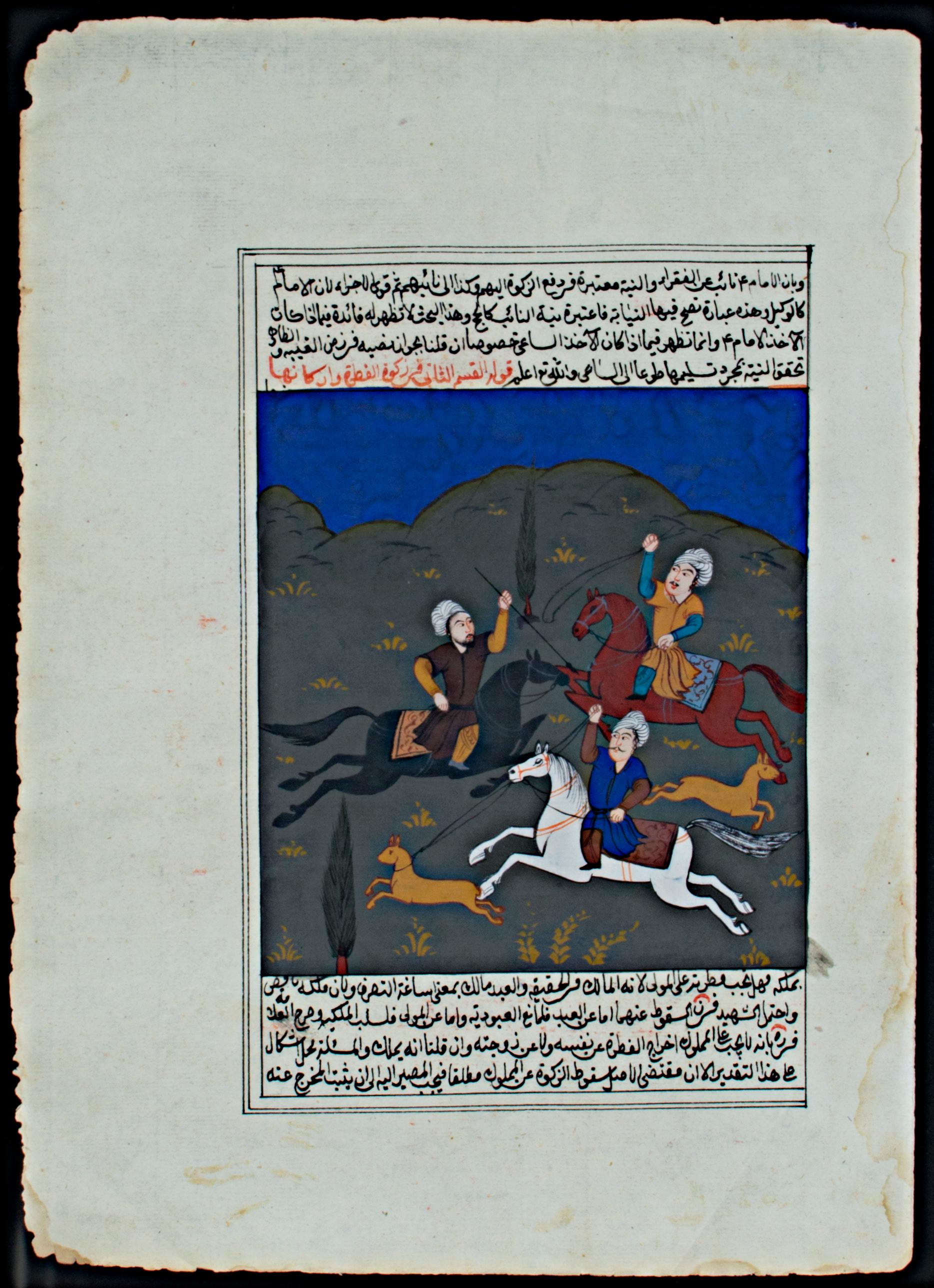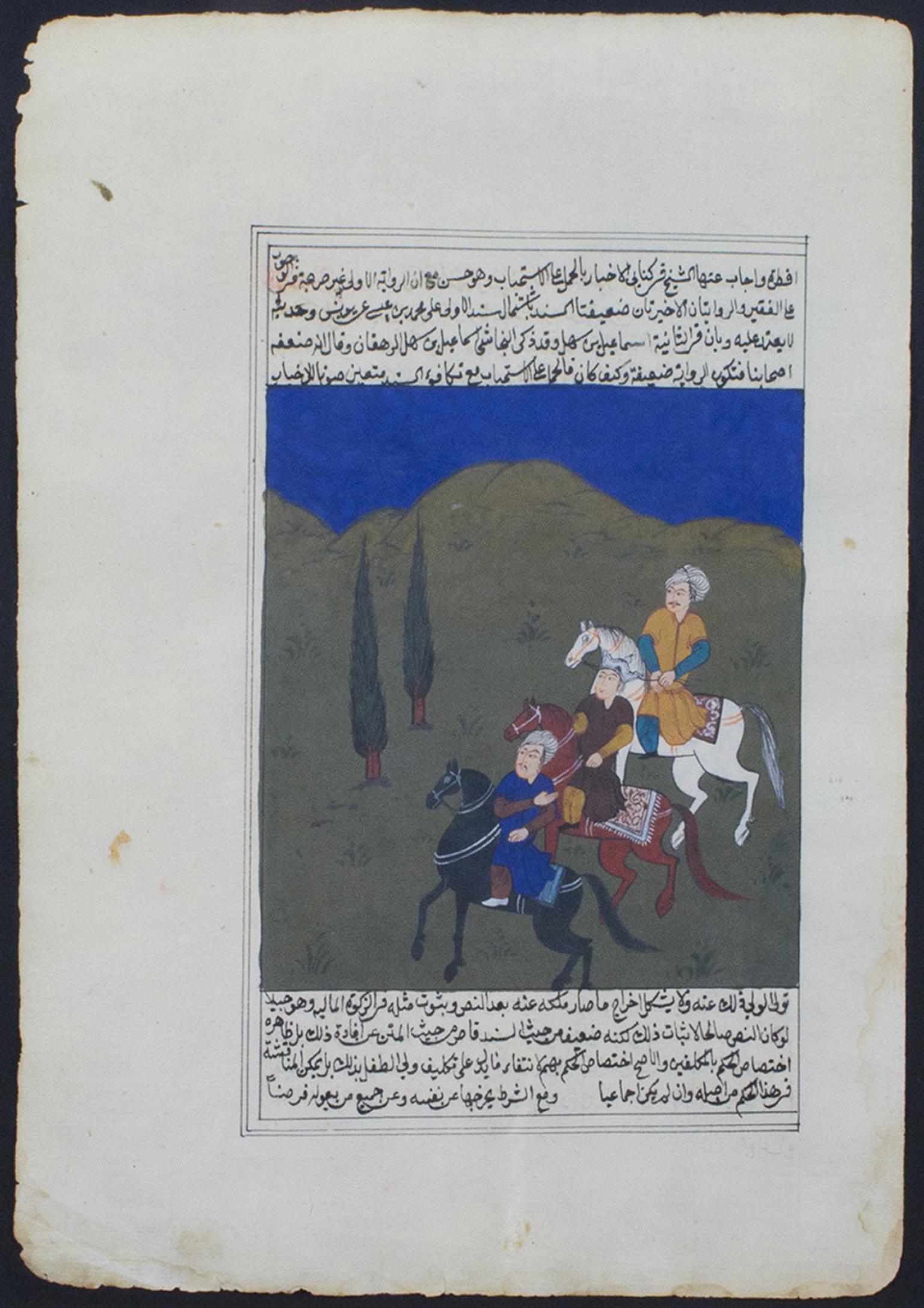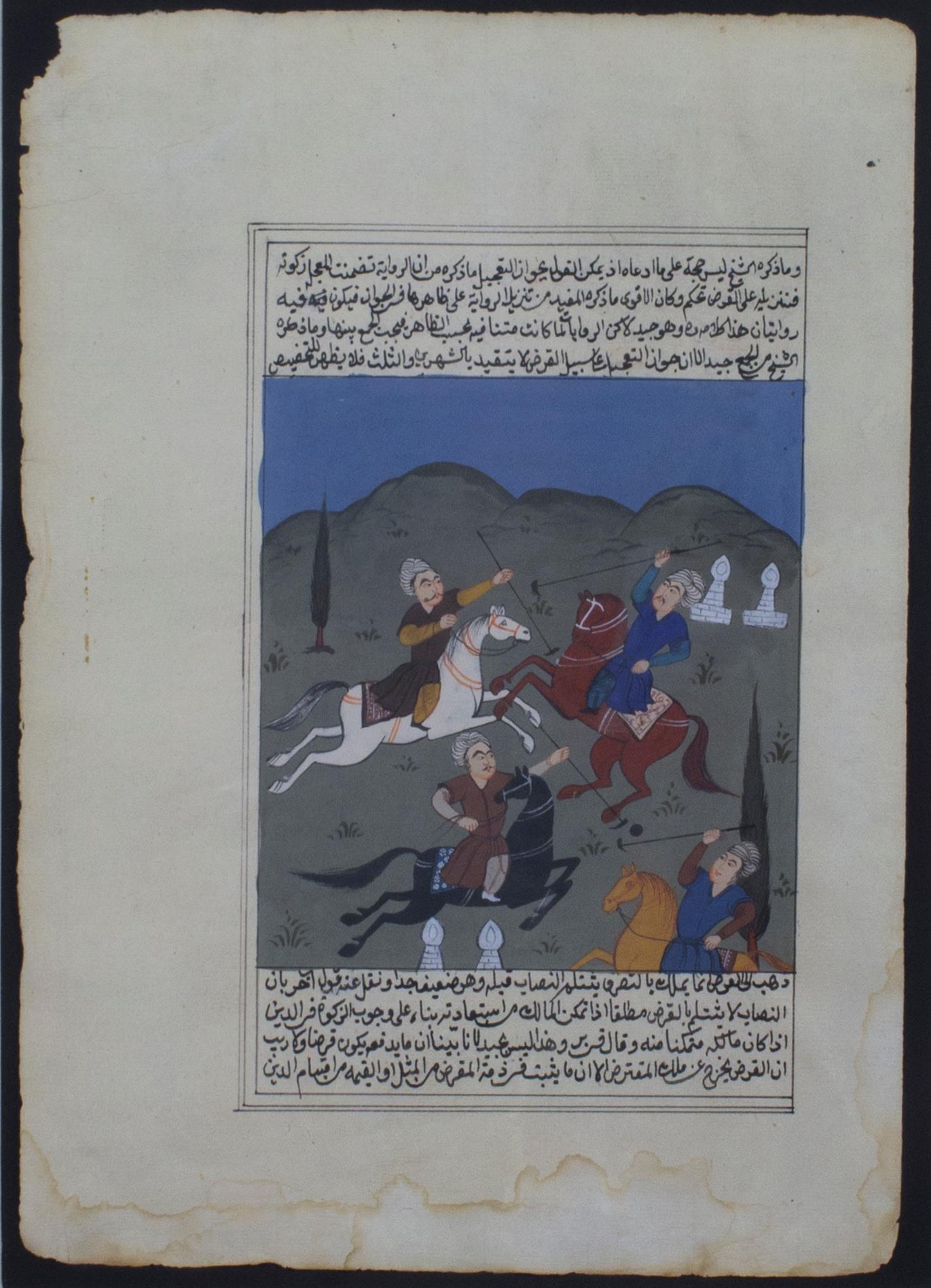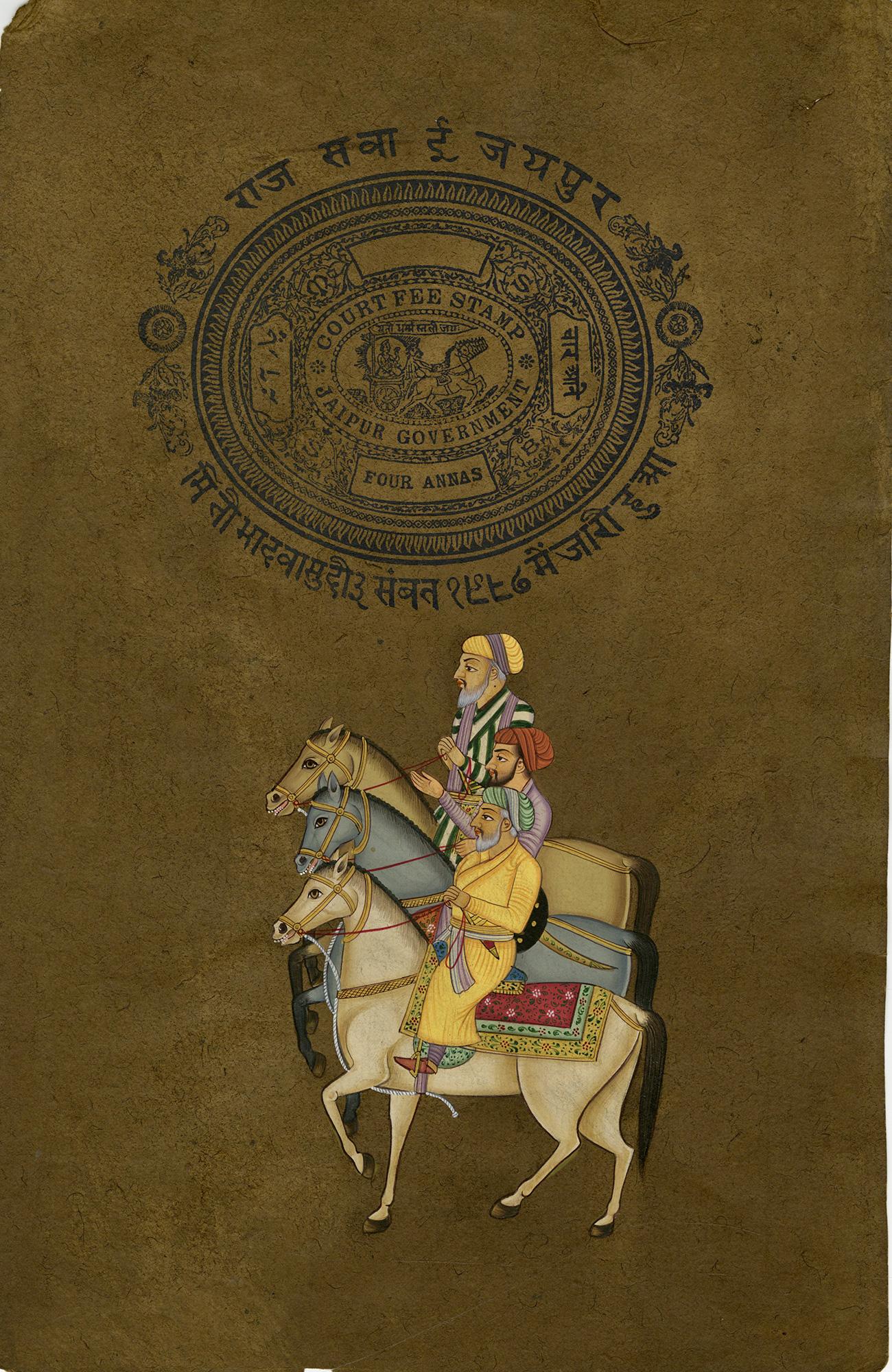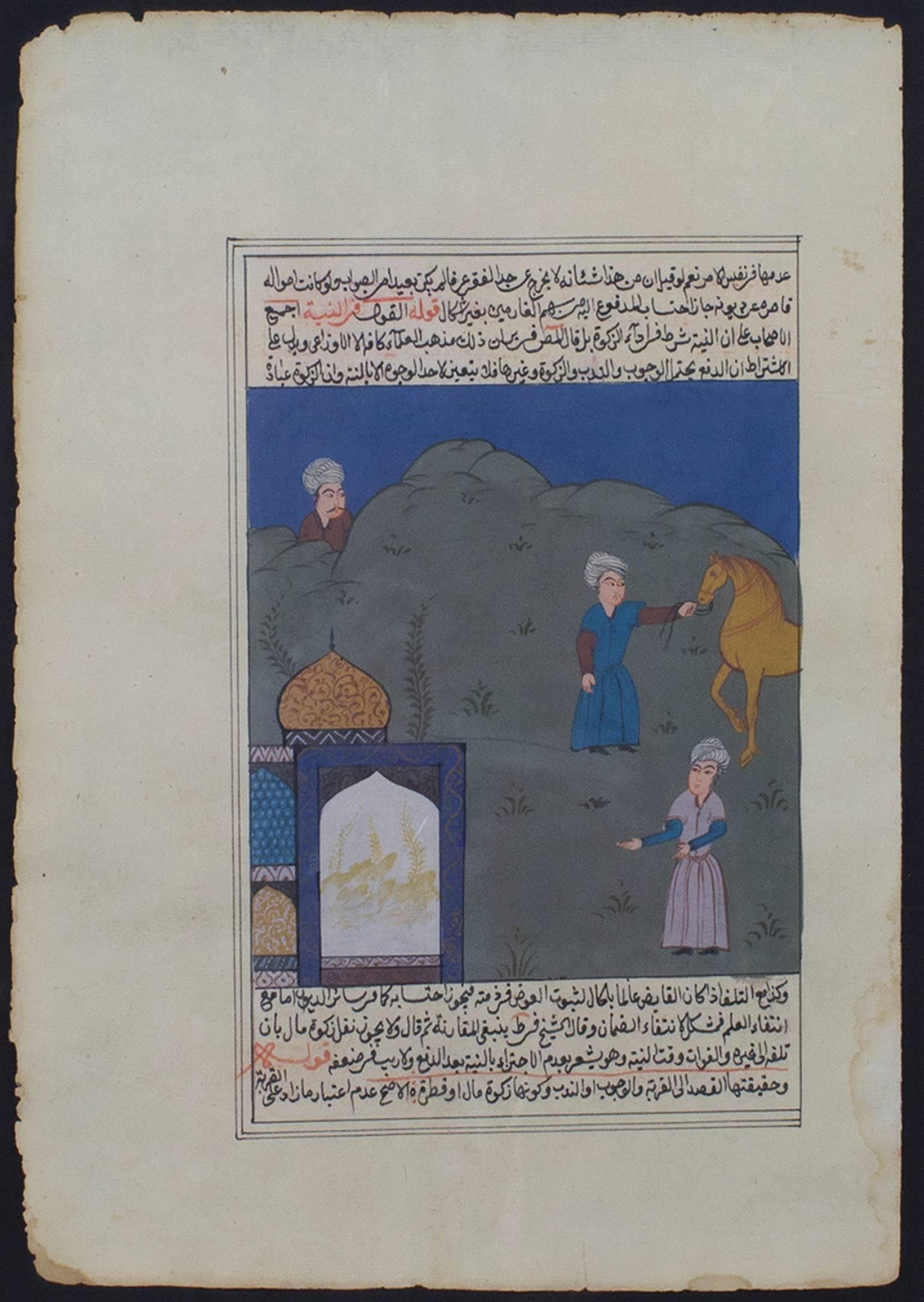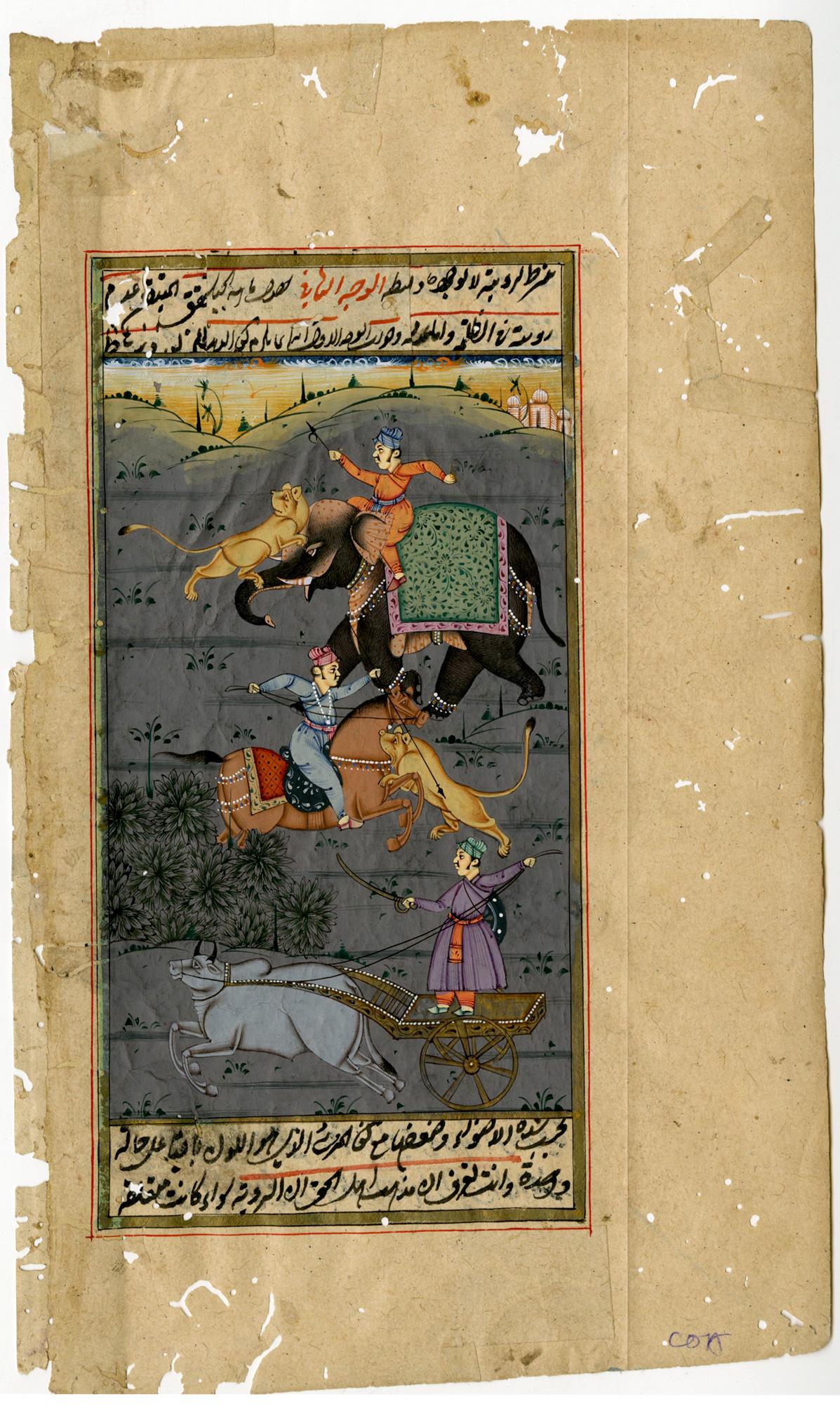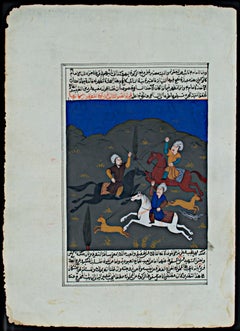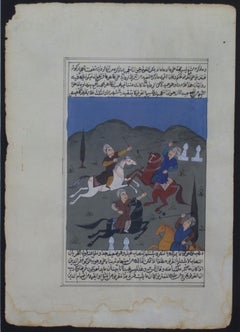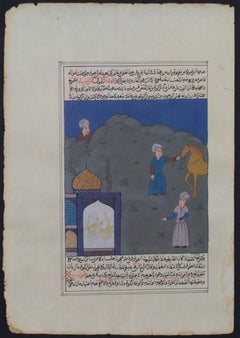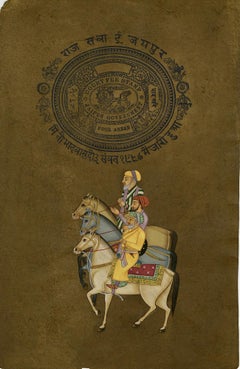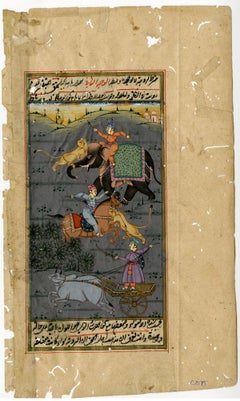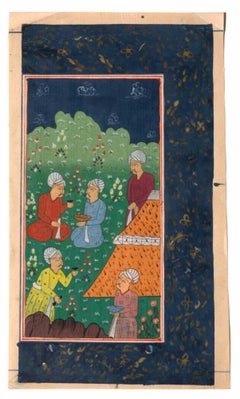Items Similar to "Two Warriors on Horseback, Foot Soldier, and Civilians, " Persian Book Page
Want more images or videos?
Request additional images or videos from the seller
1 of 9
Unknown"Two Warriors on Horseback, Foot Soldier, and Civilians, " Persian Book PageLate 19th Century
Late 19th Century
$2,495
£1,895.16
€2,183.86
CA$3,513.58
A$3,895.32
CHF 2,047.14
MX$47,672.34
NOK 25,566.73
SEK 23,996.94
DKK 16,301.18
About the Item
"Two Warriors on Horseback, Foot Soldier, and Civilians" is an original gold and tempera painting by an unknown Persian artist from the late 19th century. It features a number of figures in a simplified, flattened landscape. There is writing and a border around the image.
8 1/8" x 5 7/8" paper
16" x 13 1/2" frame
- Creation Year:Late 19th Century
- Dimensions:Height: 16 in (40.64 cm)Width: 13.5 in (34.29 cm)
- Medium:
- Movement & Style:
- Period:
- Condition:
- Gallery Location:Milwaukee, WI
- Reference Number:Seller: 1992d1stDibs: LU60533001103
About the Seller
4.9
Platinum Seller
Premium sellers with a 4.7+ rating and 24-hour response times
Established in 1966
1stDibs seller since 2017
440 sales on 1stDibs
Typical response time: 3 hours
- ShippingRetrieving quote...Shipping from: Milwaukee, WI
- Return Policy
Authenticity Guarantee
In the unlikely event there’s an issue with an item’s authenticity, contact us within 1 year for a full refund. DetailsMoney-Back Guarantee
If your item is not as described, is damaged in transit, or does not arrive, contact us within 7 days for a full refund. Details24-Hour Cancellation
You have a 24-hour grace period in which to reconsider your purchase, with no questions asked.Vetted Professional Sellers
Our world-class sellers must adhere to strict standards for service and quality, maintaining the integrity of our listings.Price-Match Guarantee
If you find that a seller listed the same item for a lower price elsewhere, we’ll match it.Trusted Global Delivery
Our best-in-class carrier network provides specialized shipping options worldwide, including custom delivery.More From This Seller
View AllPersian Illuminated Miniature with Three Hunters on Horseback in a Landscape
Located in Milwaukee, WI
The present illuminated folio page contains a fine miniature depicting three figures hunting while on horseback, an image meant to accompany a historic epic. During the medieval period, hunting was an important pastime of male nobility throughout the Islamic world. The Quran itself explicitly endorses hunting and the use of animals to aid in capturing prey: "Lawful to you are foodstuffs that are good to eat and any game that, at your wish, is captured by beasts of prey which train as you do dogs, according to the method that Allah has taught you, after you have spoken the name of Allah over it." (Q 6:4) Muslim princes and nobles enjoyed the chase of the prey via horseback, using bow and arrow, crossbows, and blowpipes to capture their prey Horseback riding itself trained young men in the necessary skills for armed combat and warfare, developing their speed and strength.
12 x 8.25 inches, artwork
19.75 x 15.88 inches, frame
accompanied on the back with an image of the verso
framed to conservation standards with a 100% rag silk-lined mat in a gold gilded frame
A Persian miniature is a small Persian painting on paper, whether a book illustration or a separate work of art intended to be kept in an album of such works called a muraqqa. The techniques are broadly comparable to the Western and Byzantine traditions of miniatures in illuminated manuscripts. Although there is an equally well-established Persian tradition of wall-painting, the survival rate and state of preservation of miniatures is better, and miniatures are much the best-known form of Persian painting in the West, and many of the most important examples are in Western, or Turkish, museums. Miniature painting became a significant genre in Persian art in the 13th century, receiving Chinese influence after the Mongol conquests, and the highest point in the tradition was reached in the 15th and 16th centuries. The tradition continued, under some Western influence, after this, and has many modern exponents. The Persian miniature was the dominant influence on other Islamic miniature traditions, principally the Ottoman miniature...
Category
19th Century Other Art Style Figurative Paintings
Materials
Ink, Tempera, Laid Paper
"Three Riders, Two Trees, " Tempera on Paper by Unknown Persian Artist
Located in Milwaukee, WI
"Three Riders, Two Trees" is an original tempera painting by an unknown Persian artist. it features three royal figures on three horses riding through ...
Category
Late 19th Century Rajput Figurative Drawings and Watercolors
Materials
Paper, Tempera
Persian Illuminated Miniature with Four Figures Playing Polo in a Landscape
Located in Milwaukee, WI
The present illuminated folio page contains a fine miniature depicting four figures playing polo. Polo, also called 'chagun,' was the sport of kings and princes of central Asia and Iran, and the sport probably originated there in the 6th century BCE. Polo matches appear in a large number of early Persian texts, including in the writings of the 10th century epic writer Abu l-Qasim al-Firdawsi: He describes numerous polo matches in his famous 'Shahnameh' (The Persian Book of Kings). This particular illumination also is closely related to an example held at the Smithsonian Museum of Asian Art: a folio from 'Guy u Chawgan' (The ball and the polo-mallet) which shows a polo game with the dervish and the shah.
12 x 8.25 inches, artwork
19.75 x 15.88 inches, frame
accompanied on the back with an image of the verso
framed to conservation standards with a 100% rag silk-lined mat in a gold gilded frame
A Persian miniature is a small Persian painting on paper, whether a book illustration or a separate work of art intended to be kept in an album of such works called a muraqqa. The techniques are broadly comparable to the Western and Byzantine traditions of miniatures in illuminated manuscripts. Although there is an equally well-established Persian tradition of wall-painting, the survival rate and state of preservation of miniatures is better, and miniatures are much the best-known form of Persian painting in the West, and many of the most important examples are in Western, or Turkish, museums. Miniature painting became a significant genre in Persian art in the 13th century, receiving Chinese influence after the Mongol conquests, and the highest point in the tradition was reached in the 15th and 16th centuries. The tradition continued, under some Western influence, after this, and has many modern exponents. The Persian miniature was the dominant influence on other Islamic miniature traditions, principally the Ottoman miniature...
Category
19th Century Other Art Style Figurative Paintings
Materials
Ink, Tempera, Laid Paper
"Three Men with Horse & Building, " Tempera Page by Persian artist
Located in Milwaukee, WI
"Three Men with Horse & Building" is an original tempera painting by an unknown Persian artist from the late 19th century. It features a number of figu...
Category
Late 19th Century Rajput Figurative Drawings and Watercolors
Materials
Tempera
"Royalty Greeting Townspeople, " a Tempera Diptych from the Late 19th c.
Located in Milwaukee, WI
"Royalty Greeting Townspeople" is a Persian tempera diptych from the Late 19th century. It includes multiple figures in red and blue interacting in a f...
Category
Late 19th Century Other Art Style Figurative Prints
Materials
Tempera
Horse & Rider Attacking Foot Soldier from De La Bataille Vol. I
By Claude Weisbuch
Located in Milwaukee, WI
Homage a Leonardo d'Vinci (Horse & Rider Attacking Foot Soldier from De La Bataille Vol. I)
Original drypoint, signed lower right, ed. VIII/L
Art: 11-5/8" x 15-1/2"
Frame: 27-5/8"...
Category
1970s Drawings and Watercolor Paintings
Materials
Drypoint
You May Also Like
Three Rajput noblemen on horseback – Rajasthani School, 19th century
Located in Middletown, NY
Ink and gouache with gold heightening on fibrous, brown laid paper, with a Jaipur Court Fee tax stamp in black ink on the recto, as well as the Jaipur City Council blindstamp, 13 5/8...
Category
19th Century Rajput Figurative Drawings and Watercolors
Materials
Gold
Mughal School, 17th century Tiger Hunt near the Jahangir Maha, Agra
Located in Middletown, NY
An illuminated page from a book likely in reference to palace life during Emperor Jahangir's reign over the Mughal Empire.
c 1690. Gouache and ink with heightening in gold on light ...
Category
17th Century Rajput Figurative Drawings and Watercolors
Materials
Gold
Ancient Persian Miniature: Men with Scimitar - Probably 18/19th Century
Located in Roma, IT
Image dimensions: 15 X 10 cm.
This Persian Miniature scene of men with scimitar is a unique precious original painting on the front with handwriting...
Category
18th Century Figurative Drawings and Watercolors
Materials
Ink, Tempera
Ancient Persian Miniature - Original China Ink and Watercolour - 19th Century
Located in Roma, IT
Ancient Persian Miniature is an original China Ink and Watercolour realized by an artist of 19th Century.
Good condition for a little brown ...
Category
19th Century Old Masters Figurative Drawings and Watercolors
Materials
Ink, Watercolor
Indian Miniature Painting Mewar Maharaja on Horse Courtly India Master Artist
Located in Norfolk, GB
Banwari Lal Jangid
Mewar School, Maharaja on horseback with guards
Size: 37.2 x 28.2 cm
Natural Pigment on Handmade paper
20th Century
This is a fabulous miniature painting by one ...
Category
20th Century Other Art Style Figurative Paintings
Materials
Paper, Watercolor
Vivid Safavid: Enchanted Tales of Persia - Gold Highlighted Miniature Manuscript
Located in Langweer, NL
A manuscript page containing Persian miniature painting, surrounded by script. This artwork is characteristic of Islamic manuscript illumination, pa...
Category
Antique Early 18th Century Persian Decorative Art
Materials
Paper
$490 Sale Price
30% Off
More Ways To Browse
Antique Drawing Book
Antique Book Pages
8 Foot Painting
Antique Tempera Painting
5 Foot Painting
Antique Persian Painting
Warrior On Horseback
Henry Reuterdahl
Hilary Scoffield
Jockum Nordstrom
Jose Ladron De Guevara
Juan Nakai
Karl Kuerner
Louis Leloup
Lucas Barraza
Mamani Mamani
Nell Brinkley On Sale
Ramadhan Hamisi
